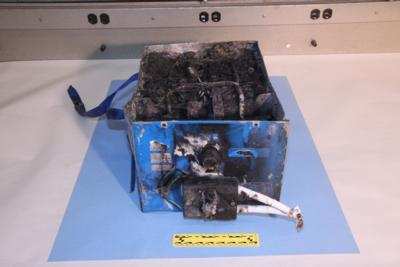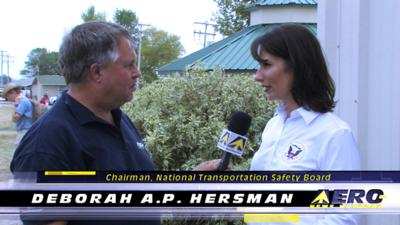Design, Certification And Manufacturing Processes Come Under Scrutiny
At a news conference today, NTSB Chairman Deborah A.P. Hersman identified the origin of the Jan. 7 battery fire that occurred on a Japan Airlines 787 parked at Boston Logan Airport, and said that a focus of the investigation will be on the design and certification requirements of the battery system.

"U.S. airlines carry about two million people through the skies safely every day, which has been achieved in large part through design redundancy and layers of defense," said Hersman. "Our task now is to see if enough - and appropriate - layers of defense and adequate checks were built into the design, certification and manufacturing of this battery."
After an exhaustive examination of the JAL lithium-ion battery, which was comprised of eight individual cells, investigators determined that the majority of evidence from the flight data recorder and both thermal and mechanical damage pointed to an initiating event in a single cell. That cell showed multiple signs of short circuiting, leading to a thermal runaway condition, which then cascaded to other cells. Charred battery components indicated that the temperature inside the battery case exceeded 500 degrees Fahrenheit.
As investigators work to find the cause of the initiating short circuit, they ruled out both mechanical impact damage to the battery and external short circuiting. It was determined that signs of deformation and electrical arcing on the battery case occurred as a result of the battery malfunction and were not related to its cause.
Chairman Hersman said that potential causes of the initiating short circuit currently being evaluated include battery charging, the design and construction of the battery, and the possibility of defects introduced during the manufacturing process.

During the 787 certification process, Boeing studied possible failures that could occur within the battery. Those assessments included the likelihood of particular types of failures occurring, as well as the effects they could have on the battery. In tests to validate these assessments, Boeing found no evidence of cell-to-cell propagation or fire, both of which occurred in the JAL event.
The NTSB learned that as part of the risk assessment Boeing conducted during the certification process, it determined that the likelihood of a smoke emission event from a 787 battery would occur less than once in every 10 million flight hours. Noting that there have been two critical battery events on the 787 fleet with fewer than 100,000 flight hours, Hersman said that "the failure rate was higher than predicted as part of the certification process and the possibility that a short circuit in a single cell could propagate to adjacent cells and result in smoke and fire must be reconsidered."

As the investigation continues, which will include testing on some of the batteries that had been replaced after being in service in the 787 fleet, the NTSB will continue to share its findings in real time with the FAA, Boeing, the Japan Transport Safety Board, and the French investigative agency, the Bureau d'Enquêtes et d'Analyses.
"The decision to return the fleet to flight will be made by the FAA, which underscores the importance of cooperation and coordination between our agencies," Hersman said.
She also announced that the NTSB would release an interim report of factual findings within 30 days.
 Sierra Space Repositions Dream Chaser for First Mission
Sierra Space Repositions Dream Chaser for First Mission ANN's Daily Aero-Term (05.10.24): Takeoff Roll
ANN's Daily Aero-Term (05.10.24): Takeoff Roll Aero-News: Quote of the Day (05.10.24)
Aero-News: Quote of the Day (05.10.24) Aero-News: Quote of the Day (05.11.24)
Aero-News: Quote of the Day (05.11.24) ANN's Daily Aero-Term (05.11.24): IDENT Feature
ANN's Daily Aero-Term (05.11.24): IDENT Feature





